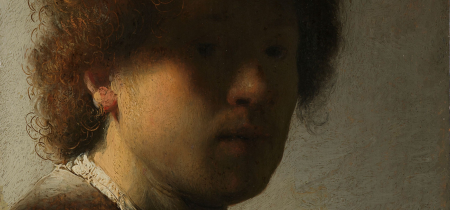Courses
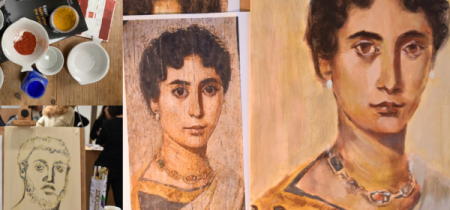 Cold Wax Painting: The Fayum Portraits
During this course students will learn the ancient technique of cold wax painting. One of the most famous examples of this technique are the Fayum portraits which were placed on...
Cold Wax Painting: The Fayum Portraits
During this course students will learn the ancient technique of cold wax painting. One of the most famous examples of this technique are the Fayum portraits which were placed on...
During this course students will learn the ancient technique of cold wax painting. One of the most famous examples of this technique are the Fayum portraits which were placed on mummies of Romans buried in Egypt. These are some of the oldest surviving portraits in the world, partly due to the wax medium's longevity.
These portraits represent a bridge between antiquity and the Byzantine tradition of icon painting. Early icons were painted using the same method and materials as the Fayum portraits. The paint consists of a few readily available non-toxic ingredients and four earth pigments. Aesthetically and culturally the mummy portraits represent a school that lasted for three centuries. They became a model and an inspiration for Christian art and still has echoes in contemporary European portraiture.
Students will learn to make their own paints out of dry pigments and cold wax medium. Beginning with the under-drawing and mapping of the features to the application of layers of paint to create volume and texture, the instructor will demonstrate how these long-lasting paintings were created.
Book now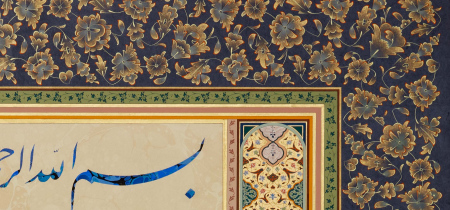 Islamic Manuscript Illumination: The Art of Noktalama Halkârî
How did master illuminators paint the finely shaded golden motifs found in Ottoman manuscripts? Shading is achieved in a variety of ways -applied with diluted gold paint...
Islamic Manuscript Illumination: The Art of Noktalama Halkârî
How did master illuminators paint the finely shaded golden motifs found in Ottoman manuscripts? Shading is achieved in a variety of ways -applied with diluted gold paint...
How did master illuminators paint the finely shaded golden motifs found in Ottoman manuscripts? Shading is achieved in a variety of ways -applied with diluted gold paint (sulandırma technique), sweeping a drop of gold in delicate brush strokes (tarama technique) and stippling the paint (noktalama halkârî technique).
This intensive, hands-on course, will focus on the noktalama halkârî technique.
Prepare your own paint from sheets of gold leaf mixed with a gelatine solution. Practice applying the paint, from a thin liquid consistency to a more dense form to see the difference this can make to your work. Then, turn your hand to shading, applying gold paint using a stippling motion.
Book now
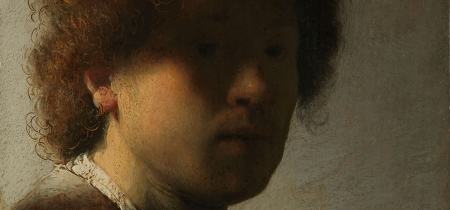 Classical Oil Painting: Chiaroscuro & Glazing Techniques from the Old Masters
Workshop offering practical experience into the working methods of master painters of the renaissance. Students will be taken step by step through the various stages of classical...
Classical Oil Painting: Chiaroscuro & Glazing Techniques from the Old Masters
Workshop offering practical experience into the working methods of master painters of the renaissance. Students will be taken step by step through the various stages of classical...
Workshop offering practical experience into the working methods of master painters of the renaissance. Students will be taken step by step through the various stages of classical painting techniques. Students will be taught about the historical pigments and their origin in the natural world, these include pigments made from earth, semi-precious rocks as well as a range of colours from the plant kingdom.
Renaissance oil painting involves constructing the painting in specific stages - after the preparation of the ground, a tonal composition (imprimatura) is prepared in tones of light and shade. Over this tonal under-painting glazes of colour are then applied in a series of layers. Through this method a dynamic relationship is created between light and shade beneath and the glazes of colour above, this is the key to the chiaroscuro effect whereby light and dark emanates from within the paint layers, resulting in a profound luminosity in the colours as well as depth in the shadow tones.
The aim of this workshop is to offer students a good grounding in the traditional painting practises employed by such artists as Rembrandt, Vermeer and Leonardo Da Vinci. Once understood, these techniques may then be adapted to all styles of painting, figurative, imaginative and abstract.
Book now
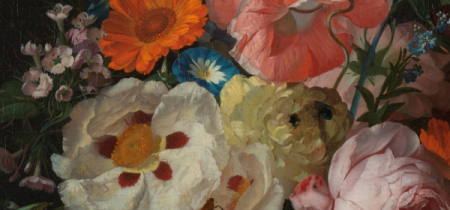 Egg Tempera: 17th Century Dutch Flower Paintings
Join us for an enriching course where you will explore stunning 17th-century flower paintings from the Dutch Golden Age.
You will kick off your journey by painting a single...
Egg Tempera: 17th Century Dutch Flower Paintings
Join us for an enriching course where you will explore stunning 17th-century flower paintings from the Dutch Golden Age.
You will kick off your journey by painting a single...
Join us for an enriching course where you will explore stunning 17th-century flower paintings from the Dutch Golden Age.
You will kick off your journey by painting a single flower, drawing inspiration from a selected image and utilizing egg tempera on a gesso ground. Then create a larger composition—either an original work or a piece inspired by a 17th-century masterpiece—on a gessoed panel, allowing your skills to flourish.
Throughout this course, you will practice the techniques of egg tempera, including the art of layering from dark to light, fine brushwork, dry brushing, and glazing.
We will use rarely seen images of Old Masters' paintings kindly provided by the Johnny Van Heften Gallery.
Book now
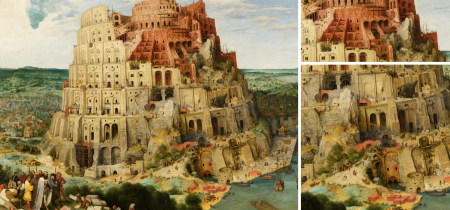 The Flemish Technique: Painting Breughel's 'Tower of Babel' in Mixed Egg Tempera & Oil Paint
Paintings by Peter Bruegel the Elder, Jan van Eyck, Raphael, Titian, and Bellini display a vibrancy of color and tone that has persisted for hundreds of years, continuing to...
The Flemish Technique: Painting Breughel's 'Tower of Babel' in Mixed Egg Tempera & Oil Paint
Paintings by Peter Bruegel the Elder, Jan van Eyck, Raphael, Titian, and Bellini display a vibrancy of color and tone that has persisted for hundreds of years, continuing to...
Paintings by Peter Bruegel the Elder, Jan van Eyck, Raphael, Titian, and Bellini display a vibrancy of color and tone that has persisted for hundreds of years, continuing to captivate audiences today.
In this course, we will explore the techniques employed by these Flemish and Italian masters of the 15th and 16th centuries to achieve such remarkable effects. Specifically, we will focus on the mixed method of egg tempera and oil paint.
This technique combines the strengths of both egg and oil mediums, resulting in greater radiance and richness in the oil colors, enhanced by the luminosity of the tempera base. Peter Bruegel excelled in this method, and its advantages are evident in his paintings—not only in his rich use of color but also in the intricate details that this technique allows.
During this course, students will be instructed in how to make their egg tempera paint which will be used for painting. The tutor will demonstrate mixing pigment with oil to make oil paint, but for the purposes of this course students will need ready oil paint. Additionally, a historical glazing medium, dating back to the 16th century, will be provided for use in the workshop.
Focusing on Bruegel’s painting "The Tower of Babel," students will gain further hands-on experience by painting a copy of a detailed section of this work. Please note that for the purposes of this course, the focus will be on process rather than creating a full painting.
Book now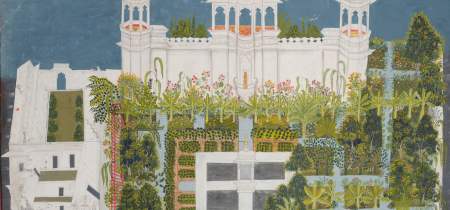 The Flowers & Trees of an Indian Garden
In most Indian miniature paintings, flowers and trees are integral to the composition. In this course, we will focus specifically on the structure of the Indian garden.
We will...
The Flowers & Trees of an Indian Garden
In most Indian miniature paintings, flowers and trees are integral to the composition. In this course, we will focus specifically on the structure of the Indian garden.
We will...
In most Indian miniature paintings, flowers and trees are integral to the composition. In this course, we will focus specifically on the structure of the Indian garden.
We will create a "Garden of Paradise," designed in sections and filled with wondrous trees and fantastical flowers. Using traditional Indian miniature painting techniques, students will develop a garden rich in texture and vibrant colors, abundant with flowers and overflowing with imagined trees.
We will cover aspects such as composition, paper preparation, color mixing, and painting techniques. Emphasis will be placed on detail and texture to bring this Garden of Paradise to life.
Book now
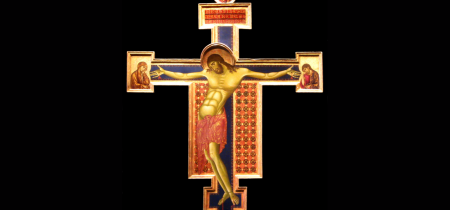 Byzantine Icon Painting: The Crucifixion
The focus of this course will be painting an icon of the crucifixion, remembering the crucifixion and resurrection of Christ at a significant time of the year.
This course...
Byzantine Icon Painting: The Crucifixion
The focus of this course will be painting an icon of the crucifixion, remembering the crucifixion and resurrection of Christ at a significant time of the year.
This course...
The focus of this course will be painting an icon of the crucifixion, remembering the crucifixion and resurrection of Christ at a significant time of the year.
This course provides an introduction to all aspects of traditional Byzantine icon painting. The aim is to understand the history and meaning of icons, as well as painting one.
Students will learn to paint in translucent layers of egg tempera, using natural and semi-precious pigments. The course will also cover using clay and gold leaf for gilding.
The tutor will paint along with students on her icon, to demonstrate each step in an easy-to-follow way.
Book now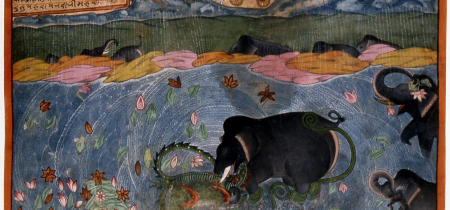 The Rivers of Indian Miniature Painting
The Ganges River flows over 2,500 miles through several states in Northern India. It is regarded as the holy personification of the goddess Ganga, and people bathe in its waters...
The Rivers of Indian Miniature Painting
The Ganges River flows over 2,500 miles through several states in Northern India. It is regarded as the holy personification of the goddess Ganga, and people bathe in its waters...
The Ganges River flows over 2,500 miles through several states in Northern India. It is regarded as the holy personification of the goddess Ganga, and people bathe in its waters to achieve spiritual cleansing. Along with the Ganges, there are four other major rivers, including the Brahmaputra, all of which are extremely important to India. It’s no surprise that these expansive waterways are often featured in Indian miniature paintings.
In this course, we will explore depictions of the river itself, as well as the diverse animals, flowers, and people that thrive in or near the water. Students will observe scenes such as elephants bathing, women washing clothes, fish swimming, and beautiful lotuses growing in the water.
We will also learn how to prepare paper and techniques for staining and burnishing. Additionally, students will be guided through various painting techniques, including color mixing, flooding, and creating wave effects found in rivers.
Book now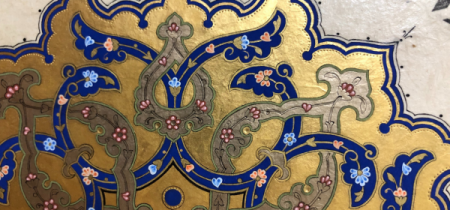 Islamic Manuscript Illumination: Flower-Inlaid Rumi Patterns
Rumî is the name of a motif found in traditional Ottoman decorative arts. Rumî compositions feature stylised animal figures such as birds, lions, deer, fish, and mythical...
Islamic Manuscript Illumination: Flower-Inlaid Rumi Patterns
Rumî is the name of a motif found in traditional Ottoman decorative arts. Rumî compositions feature stylised animal figures such as birds, lions, deer, fish, and mythical...
Rumî is the name of a motif found in traditional Ottoman decorative arts. Rumî compositions feature stylised animal figures such as birds, lions, deer, fish, and mythical creatures like dragons and the Simurgh.
During this course, students will learn to draw and paint a stunning variant of this motif, flower-inlaid Rumî.
To begin, students will learn the design rules before making their compositions. They will also learn how to prepare genuine gold and paint with it.
Alongside learning how to draw and paint these motifs, students will be given insights into technical considerations for illumination such as the traditional colour palette and different methods for shading flowers.
By the end of the course, students will have drawn, transferred and painted an art piece with flower-inlaid Rumî motifs.
Book now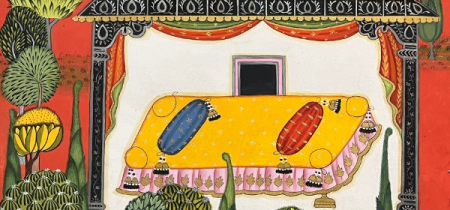 Indian Miniature Painting: Pahari Love Pavilions
In this course we will look at architectural designs in early Pahari painting, focussing on Basohli style pavilions as settings of the romantic encounters of Krishna-Radha or...
Indian Miniature Painting: Pahari Love Pavilions
In this course we will look at architectural designs in early Pahari painting, focussing on Basohli style pavilions as settings of the romantic encounters of Krishna-Radha or...
In this course we will look at architectural designs in early Pahari painting, focussing on Basohli style pavilions as settings of the romantic encounters of Krishna-Radha or Nayika-Nayaka.
These architectural elements are painted with vibrant colours and decorated with intricate geometric and floral patterns.
Book now
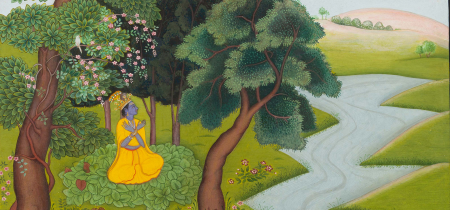 Pahari Painting: Sacred Groves
Guler Pahari painting is known for its delicate depiction of nature. Groves of trees entwined with creepers and surrounded by flowering bushes were often set as nature sanctuaries,...
Pahari Painting: Sacred Groves
Guler Pahari painting is known for its delicate depiction of nature. Groves of trees entwined with creepers and surrounded by flowering bushes were often set as nature sanctuaries,...
Guler Pahari painting is known for its delicate depiction of nature. Groves of trees entwined with creepers and surrounded by flowering bushes were often set as nature sanctuaries, dwellings of sages or places for love encounters. This course will focus on different techniques of painting beautiful trees as developed by the Guler masters.
Book now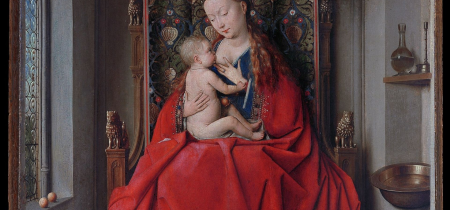 In the Alchemist's Studio: Red
Red has a particular significance in many traditions. In alchemical texts, red, which is synonymous with vermillion/cinnabar, is referred to as the alchemical wedding and was...
In the Alchemist's Studio: Red
Red has a particular significance in many traditions. In alchemical texts, red, which is synonymous with vermillion/cinnabar, is referred to as the alchemical wedding and was...
Red has a particular significance in many traditions. In alchemical texts, red, which is synonymous with vermillion/cinnabar, is referred to as the alchemical wedding and was referred to as the philosopher's stone as it symbolises the union of the opposites and also the union with God. Goethe said that all colours are ascending towards red and that red, therefore, contains all colours.
The first day of this course consists of a talk on the significance of red in the alchemical tradition and a few others. The tutor will also demonstrate the production of red iron oxide from nature.
Day 2 will involve a series of practical exercises in egg tempera paint exploring the relationship of red to other colours and the creation of tonal relationships in red through tonal underlays and overlays. Examples will be given of the work of other artists' exploration of their primordial colour.
Book now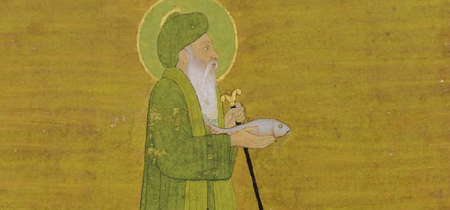 In the Alchemist's Studio: Green
Green is the colour of nature, growth and regeneration. In Islam, green symbolises the prophet Mohammed and is considered the highest colour. In Christianity green symbolises...
In the Alchemist's Studio: Green
Green is the colour of nature, growth and regeneration. In Islam, green symbolises the prophet Mohammed and is considered the highest colour. In Christianity green symbolises...
Green is the colour of nature, growth and regeneration. In Islam, green symbolises the prophet Mohammed and is considered the highest colour. In Christianity green symbolises immortality and resurrection.
The artist, Cecil Collins, referred to green as a colour of the dawn, the merging of night and day, being born out of the union of yellow (major) and blue (minor). Hilma af Klint saw green as a marriage of the opposites and thus spiritually significant.
During this two day workshop students will explore the many varieties of green through exercises in colour relationships; mixing different colours to achieve green, and explore how green is affected by surrounding colours.
On the second day, students will explore Goethe's understanding of green and through a variety of exercises in green based on Johanne ltten's research on colour at the Bauhaus.
Book now
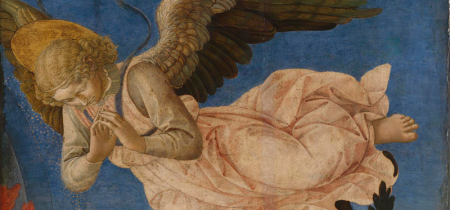 In the Alchemist's Studio: Blue
Blue is the colour of the heavens; its nature is contemplative; its energy is inward directing. The qualities of blue are stillness, receptivity and depth. Kandinsky in talking...
In the Alchemist's Studio: Blue
Blue is the colour of the heavens; its nature is contemplative; its energy is inward directing. The qualities of blue are stillness, receptivity and depth. Kandinsky in talking...
Blue is the colour of the heavens; its nature is contemplative; its energy is inward directing. The qualities of blue are stillness, receptivity and depth. Kandinsky in talking about blue said that “it calls man towards the infinite”.
The different shades of blue are understood to indicate religious feeling. There are so many different types of blue in nature, some very cool and leaning towards green, others are more warm and are closer to purple. It is this subtle interrelationship of these different shades gives blue which bring life and beauty to a painting.
Day 1 of the workshop will involve looking at the symbolism of blue with reference to Goethe’s colour theory and parallels with the Persian poet and mystic Nizami Ganjavi.
Day 2 of the workshop will involve various exercises of watercolour on paper exploring blue through the use of tonal themes incorporating warm and cool shades of blue through transparent and opaque applications as well as colour layering exercises.
Book now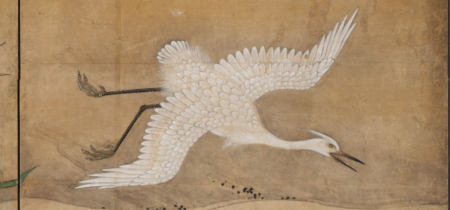 In the Alchemist's Studio: White
White is symbolic of spiritual consciousness and knowledge. It symbolises purity and has associations with the moon. It reflects all and therefore gives nothing but itself. In this...
In the Alchemist's Studio: White
White is symbolic of spiritual consciousness and knowledge. It symbolises purity and has associations with the moon. It reflects all and therefore gives nothing but itself. In this...
White is symbolic of spiritual consciousness and knowledge. It symbolises purity and has associations with the moon. It reflects all and therefore gives nothing but itself. In this sense, it is seen as the ‘father’, whereas darkness, which absorbs and contains all colour, is the ‘mother’.
White is the manifestation of the mystery of darkness. It is the other side of darkness and resides within darkness just as darkness resides within light/white. Without the other, neither can exist. White is the physical ‘created’ light whereas gold denotes spiritual, ‘uncreated’ light, eternal light which existed before the creation.
The first day of the workshop will be an enquiry into the nature of white, how it is made alchemically from darkness and its symbolic nature in the souls the awakening.
The second day will be a practical exploration with ink and brush on paper journeying into the nature of white in all its aspects through the seven tones and the seven levels of being, each tone expressing a different stage in the evolution of the soul's awakening.
Book now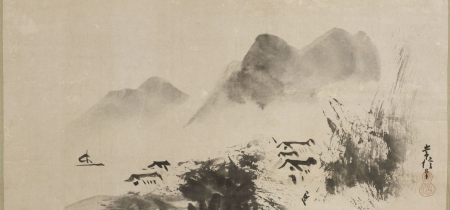 In the Alchemist's Studio: Black
Of all colours, black was one of the earliest pigments to be used by artists, evident in cave paintings over 60,000 years old. Symbolically black is the mother of colour, absorbing...
In the Alchemist's Studio: Black
Of all colours, black was one of the earliest pigments to be used by artists, evident in cave paintings over 60,000 years old. Symbolically black is the mother of colour, absorbing...
Of all colours, black was one of the earliest pigments to be used by artists, evident in cave paintings over 60,000 years old. Symbolically black is the mother of colour, absorbing all other colours and light. Black signifies the receptive, existing beyond time and space, and embodies primordial feminine wisdom—the source of the universe. It is the hidden darkness from which all light emerges.
We will focus on the particular significance of black in traditional Chinese ink making, a craft that dates back to the 12th century. This process involves creating black ink through the burning of resinous pine, resulting in a unique black that is regarded as the finest of all blacks. Additionally, we will examine other historical black pigments, such as ivory, bone, lampblack, and vine black, and discuss how an understanding of ink-making processes is essential to its creative ex
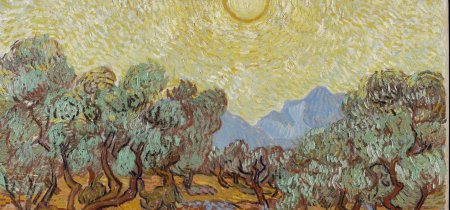 In the Alchemist's Studio: Yellow
Yellow in alchemy marks the beginning of the soul's awakening through the passage of its soul's journey from darkness to light. In India, yellow is considered a sacred colour due...
In the Alchemist's Studio: Yellow
Yellow in alchemy marks the beginning of the soul's awakening through the passage of its soul's journey from darkness to light. In India, yellow is considered a sacred colour due...
Yellow in alchemy marks the beginning of the soul's awakening through the passage of its soul's journey from darkness to light. In India, yellow is considered a sacred colour due to its relationship to the cow, symbolic of the mother of all creation. Yellow is one of the three primary colours; when mixed with blue or black, it becomes green. When combined with purple, its complementary opposite, its colour disappears, and we are left with grey. When placed beside purple, it vibrates with an extraordinary intensity.
Day 1 of the workshop will begin with a talk on the different yellows found
in nature - in minerals and plants, with examples of the processes by which these can be extracted from nature.
Day 2 will involve colour exercises exploring different shade of yellow and their relationship to other colours, with particular reference to the major and minor colours and how these can be employed compositionally using different colour harmonies.
Book now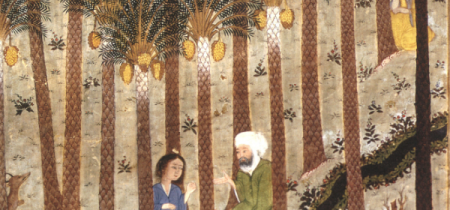 Lovers in a Garden: Layla & Majnun
Explore Persian miniature painting through the love story of Layla and Majnun, a tale of intense, unfulfilled love popularised by the 12th-century poet Nizami Ganjavi. Layla and...
Lovers in a Garden: Layla & Majnun
Explore Persian miniature painting through the love story of Layla and Majnun, a tale of intense, unfulfilled love popularised by the 12th-century poet Nizami Ganjavi. Layla and...
Explore Persian miniature painting through the love story of Layla and Majnun, a tale of intense, unfulfilled love popularised by the 12th-century poet Nizami Ganjavi. Layla and Qays fall in love at school, and Qays becomes so consumed by his passion that he becomes known as Majnun (meaning "mad"), while Layla is forced to marry another. Despite their mutual love, the two ultimately die of heartbreak without ever being able to be together.
We focus on the scene of the lovers' meeting in a palm grove, contrasting the peaceful garden setting with their inner turmoil. You will learn to depict the lovers' glances, oasis vegetation, Majnun's wild appearance, and Layla's veiled beauty. The course covers traditional techniques for brushwork, paper and paint preparation, bringing this timeless story to life through art.
Book now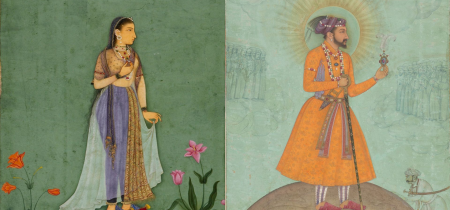 Indian Miniature Painting: The Great Mughals
This course will explore miniature painting in the Mughal tradition, which blends Persian and Hindustani influences to create a distinctive painting style.
Students will...
Indian Miniature Painting: The Great Mughals
This course will explore miniature painting in the Mughal tradition, which blends Persian and Hindustani influences to create a distinctive painting style.
Students will...
This course will explore miniature painting in the Mughal tradition, which blends Persian and Hindustani influences to create a distinctive painting style.
Students will examine extraordinary paintings, including portraits of emperors and princesses, as well as elaborate depictions of clothing, jewelry, and animals.
They will learn traditional Indian miniature painting techniques, such as paper preparation, staining, and burnishing, using handmade pigments. Additionally, students will master the technique of prataj, applying fine squirrel hair brushes to achieve the intricate details that define this art form.
Book now
